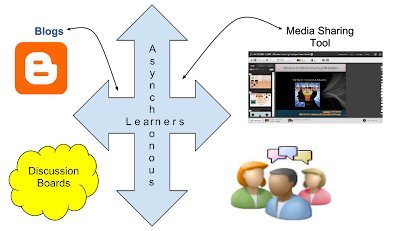An Asynchronous-learning environment has to be able to connect e-learners new information using multimedia designs and the web 2.0. For this training, the learning audience must be able to understand systematic procedures on how to operate the different types of machinery on the plant floor. The training must be available to all employees regardless of work availability. As an ending result, the employees should also be able to demonstrate work based on what they have learned from the training system, and view work from other employees. How can all of these measures be accomplished with distance learning?
Blogs can also be used for initial training, feedback and collaboration also. Instructional Designers can provide links in blogs to wikispaces to provide a venue for learners to demonstrate what they have learned and communicate with one another. Both media sharing tools can conjoin with each other to benefit learners.
Web 2.0 technologies are becoming an educational alternative to learners. Blogging, Wikis, Podcasting, Social Bookmarking, Social Networking, and Virtual Worlds are all incorporated into course management systems (Albright, Simonson, Smaldino & Zvacek, 200-2012, pp. 128-131). Depending on the training the ID is performing, can depend on what multimedia sources the trainer will utilize in the learning management system. Sometimes training can utilize the web 2.0 for instruction, collaboration, demonstrations, and feedback. The training class for a biodiesel manufacturing plant utilizes several training modules that can be incorporated into a wiki. This platform provides many facets of multimedia designs including links, videos, collaboration, and on-going feedback from the professor.
References
Albright, M., Simonson, M., Smaldino, S., &
Zvacek, S. (200-2012). Teaching and learning at a distance foundations
of distance education. (5th ed., pp. 127-132). Boston, MA: Allyn & Bacon.
Common Craft. (Producer) (2007). Wetpaint wikis in plain english [Web]. Retrieved from http://www.youtube.com/watch?v=F7BAU2XX5Ws
Waldenu.edu. (Producer). (2012). The
technology of distance education. [Web Video]. Retrieved from https://class.waldenu.edu/webapps/portal/frameset.jsp?tab_tab_group_id=_2_1&url=/webapps/blackboard/execute/launcher?type=Course&id=_1341074_1&url=



No comments:
Post a Comment